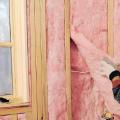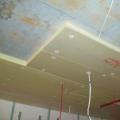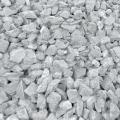What material is better to choose for the walls of the house?
An individual developer is necessarily faced with the issue of choosing the optimal material for the construction of a residential building. The choice of building materials for walls takes into account climatic features, relief nuances, financial capabilities, etc. There is no single formula for this. All materials for construction have different strengths, require the use of unique construction technology, and do not have the same levels of thermal conductivity.
What determines the choice of material for a home?
The construction of walls accounts for a quarter of all costs of building a house. A careless attitude to the choice of material will entail additional subsequent expenses. Therefore, it is worth considering and considering all the important criteria and factors when choosing the best material for building the walls of a house:
Labor costs. For example, the cost of time and effort is reduced if you build a house from panel blocks, rather than from bricks and other small elements. Modern panel houses can be made several times faster, especially if they are frame structures.
Thermal insulating properties of the material. When choosing a deliberately cold material for walls, the developer will pay a high price in winter for such a reckless step. The owner will also have to deal with insulating the outside walls of the house. When calculating this indicator, current climatic conditions are taken into account.
Price issue. If you give preference to a durable and lightweight version of the material for the walls, then you can save on the construction of a powerful foundation, which is expensive to build.
Taking into account also the subsequent costs of finishing work. Today there are smooth materials for modern walls that do not require finishing.
A log house is one of the options for walls that do not require finishing
Types of wall materials
The building materials market offers a wide selection of different options for constructing the walls of your home. There are several types of bricks alone: silicate, clinker, ceramic, fireclay. And wood has been one of the most popular and sought-after building materials for many years. The cost of such raw materials depends on the type of wood (pine, oak, birch, cedar) and the type of material (logs, boards, beams). A very popular and more economical option are various types of blocks: foam blocks, ceramic blocks, thermoblocks, lightweight concrete blocks, etc. In Europe, for example, houses are most often built using the frame method, which is very fast and inexpensive. About 70% of the private housing stock in Europe is occupied by frame building construction technology. Builders also note the cost-effectiveness and energy efficiency of SIP panels.
Let's consider the main types of materials:
Log houses and log houses
A log house is an object made from cut trunks of a solid tree. Work such as cutting corners, adjusting joints and grooves is always done manually.

Such houses look presentable, well built and have many advantages:

Architectural version of a log house
The disadvantages of log buildings include:
House made of timber
Glued or profiled timber is a cheaper building material for house walls, which is in great demand today.

Advantages of timber:
In addition, such material is relatively inexpensive.
However, timber:
They say that such a structure can be built alone, with certain knowledge and skills. But its construction scheme is more complex and ornate than, for example, a brick one.

Frame house under construction
All the advantages of frame houses:

The disadvantages of frame structures include:
Resonance of walls and ceilings;
The need to have a competent construction project, which will contain all the drawings and diagrams of fasteners and components.
The disadvantages of such houses can also be attributed to the conservative mentality of our citizens, who look at frame structures with caution, considering them unreliable.
SIP panels
Canada and America have been actively using frame-panel technologies in construction for more than half a century. In our country this method is not yet so popular. A SIP panel is a three-layer building material made from two layers of OSB and internal polystyrene foam insulation.

This is what a SIP panel looks like
Advantages of SIP panels:
In addition, SIP panels are an environmentally friendly building material.

This is what a house built from SIP panels without façade finishing looks like
Its disadvantages include the following aspects (of which, by the way, there are many):
Brick walls
Brick is the most common and most affordable material for building exterior walls of a house. It is usually made from clay and is enhanced with various impurities. All the advantages of brick:

The disadvantages of building materials include:
Expanded clay blocks
Ceramic blocks are made from red clay, just like bricks. But the blocks differ from them in their larger dimensions. This option for constructing walls from ceramic blocks is very similar to the technology for constructing brick houses.

Pros of ceramic blocks:

The disadvantages of ceramic blocks include:
 Construction materials and list of works
Construction materials and list of works Proper insulation of a wooden ceiling in a private house
Proper insulation of a wooden ceiling in a private house What types of crushed stone are there?
What types of crushed stone are there?